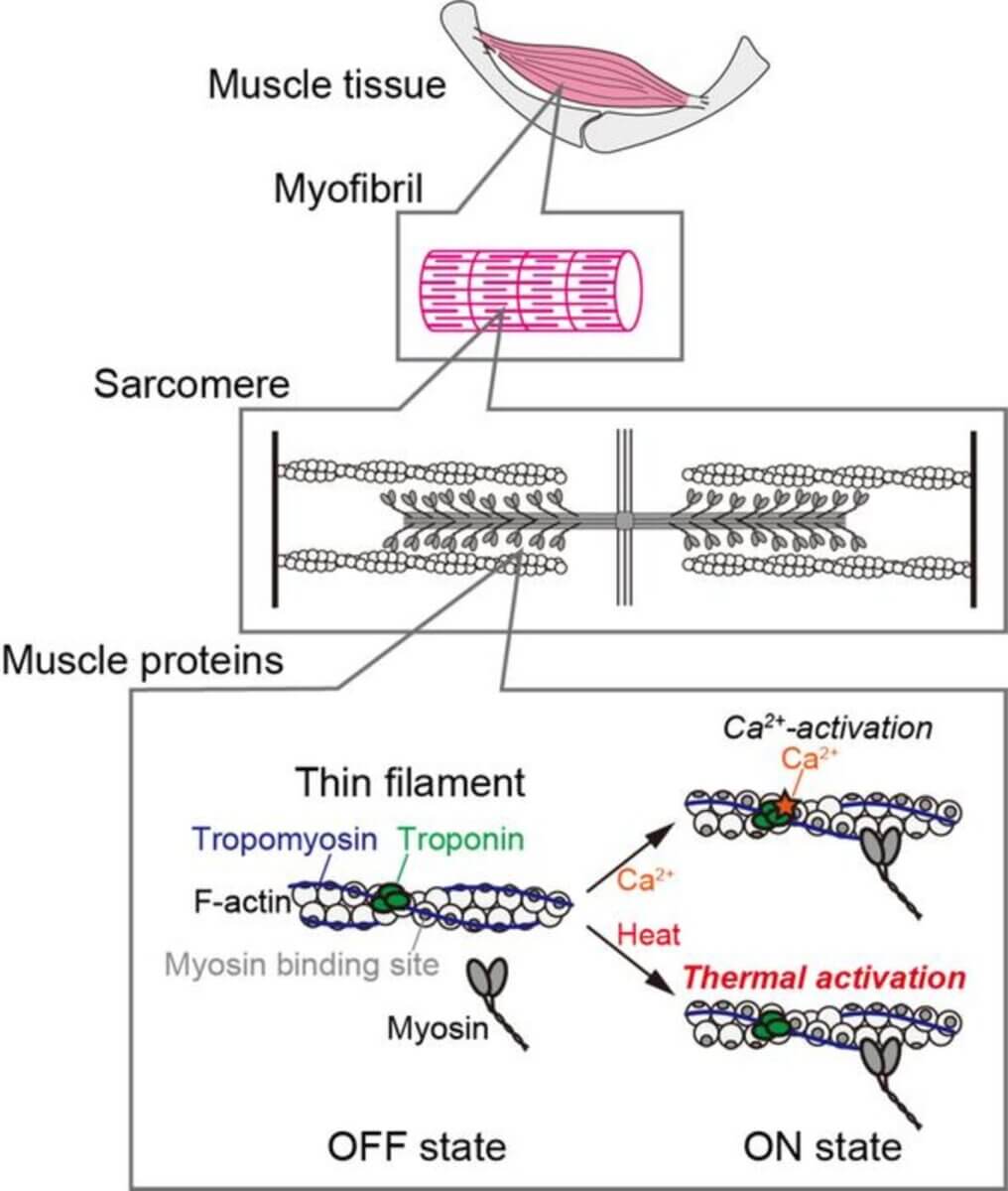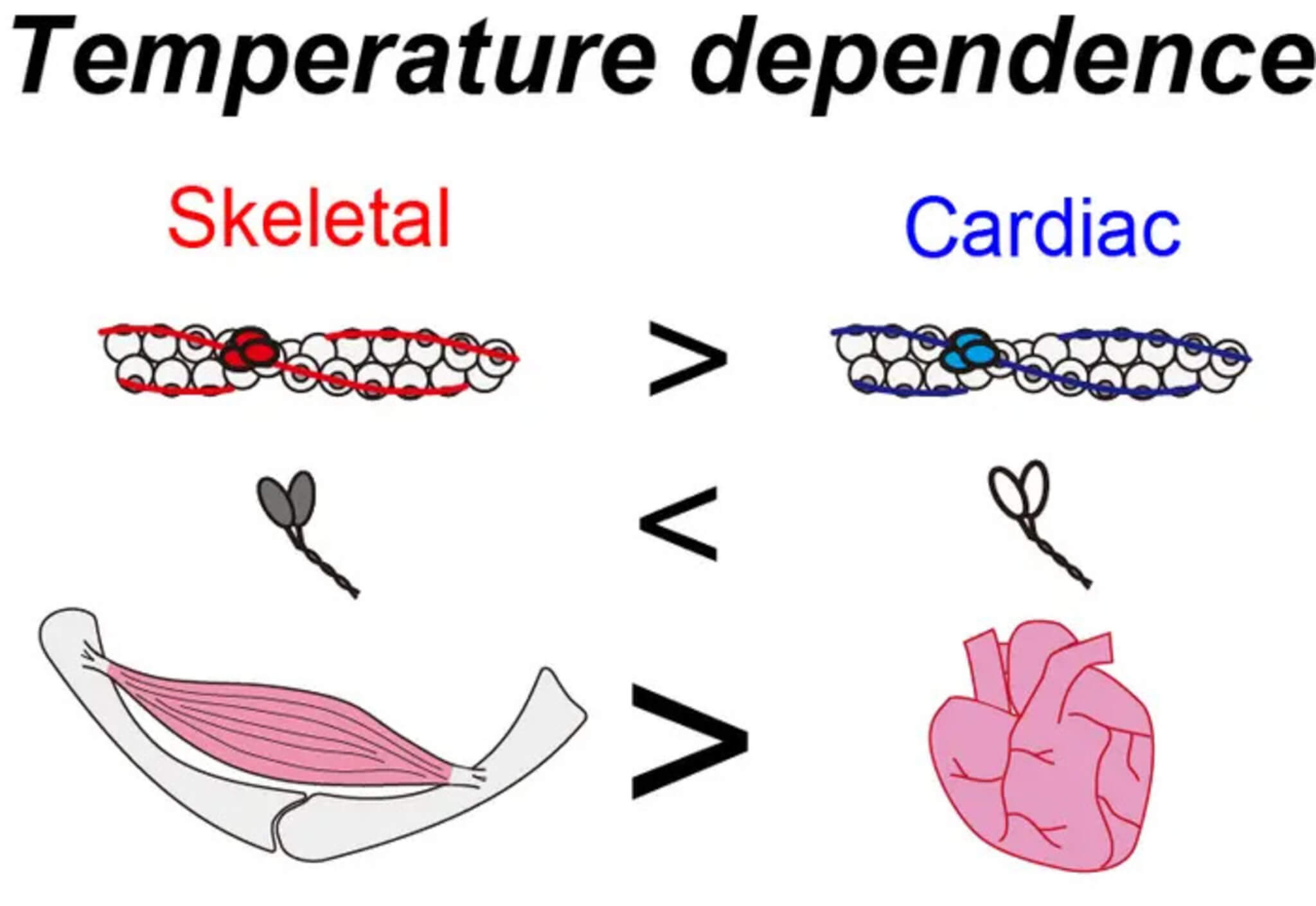OSAKA, Japan — Warming up our muscles before engaging in physical exercise has always been important, but the science behind this routine practice has remained somewhat mysterious. Japanese researchers are now shedding light on the intricacies of muscle warm-up and its potential benefits for various populations.
Muscles, whether in our hearts or throughout our bodies, contract in response to electrical signals from our nervous system. This contraction is made possible by specific proteins within muscle cells that enable us to move.
Scientists from Osaka University, The Jikei University School of Medicine and National Institutes for Quantum Science and Technology had previously explored how temperature affects the contraction of cardiac muscles, the muscles responsible for the heart’s pumping action. They found that the heart can efficiently contract within the body’s normal temperature range.

Unraveling the mystery of skeletal muscles
With their sights set on skeletal muscles, the muscles responsible for our body’s movement, researchers set out to determine whether these muscles react to temperature in a similar manner to cardiac muscles. Their goal was to find out if all muscles were created equal when it came to temperature sensitivity.
Their investigation revealed a fascinating discovery: certain proteins within muscle cells act as temperature sensors, and heating affects skeletal and cardiac muscle contractions differently.
Different muscles, different temperature sensitivity
“Our findings point to differences in the temperature sensitivity of proteins responsible for contraction in skeletal vs. cardiac muscles,” says study co-lead author Kotaro Oyama in a media release. “Basically, the skeletal muscle that moves our body around is more sensitive to heating than the heart.”
This means that when we warm up our bodies, skeletal muscles respond more quickly to the increase in temperature than the heart does. During warm-up exercises, even slight warming due to light movement can significantly improve the efficiency of skeletal muscles. As a result, these muscles can conserve energy and rest when not in use, contributing to enhanced exercise performance.
On the other hand, the heart’s lower temperature sensitivity is beneficial for maintaining a steady heartbeat, regardless of external temperature fluctuations.
Implications for exercise performance
The research provides valuable insights into how warming up before exercise enhances muscle performance at the molecular level. The revelation that some muscle proteins act as temperature sensors suggests the possibility of developing a new hyperthermia strategy. This approach would involve improving skeletal muscle performance by warming up the muscle specifically, potentially leading to more effective workouts.

One of the most exciting aspects of this research is its potential application to the elderly population. Incorporating appropriate warm-up routines into the daily lives of individuals, particularly the elderly, could significantly improve their muscle and exercise performance. This, in turn, could reduce the risk of injury and help maintain their independence.
The study is published in the Journal of General Physiology.
You might also be interested in:
- 5 Keys To Getting More Protein In Your Diet: Follow These Tips For Stronger Muscles, Healthier Weight
- Best Muscle-Building Supplements For 2023: Top 5 Aids Most Recommended By Fitness Pros
- Lifting weights for just 3 SECONDS a day can improve muscle strength!

